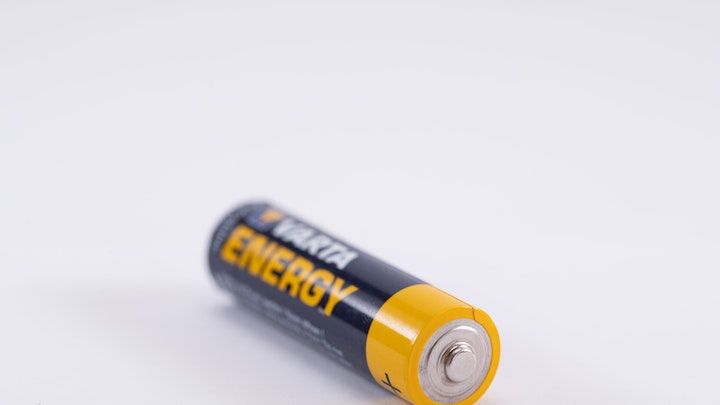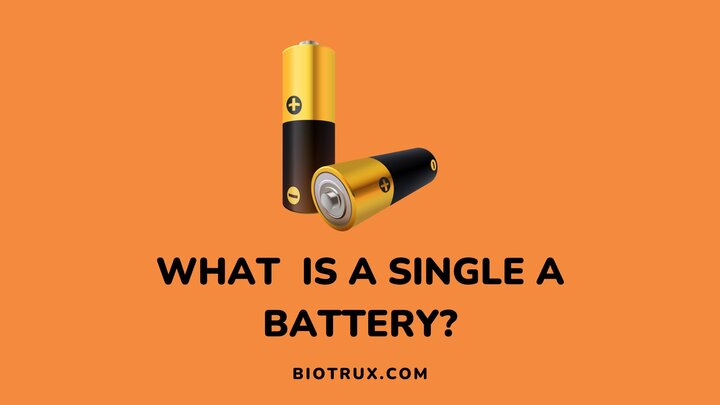When it comes to batteries, their size and type are crucial features. In terms of size, a battery can be an A (single A), AA (2A), AAA (3A), and lots more.
Single A batteries have varieties. Their non-rechargeable and alkaline versions are considered obsolete because they can power only a few devices. However, they still feature in custom battery packs.
Moving on in this guide, I will explain a single A battery, how it works, available options that can complement a single A battery, and general maintenance tips for batteries.
What is a Single A Battery?

A single A or A-size battery is a single hefty (cylindrical) dry cell with a typical power of 1.5 volts regardless. Invented in 1800 by Volta, these batteries predominantly power portable radios, remote controls, and toys.
Single A batteries have a physical dimension of 17 x 50 mm (0.67 x 1.97 inches) and a weight depending on how the battery works (chemistry). These batteries may also feature different terminal shapes, from flat-top to button-top.
While they were mainstream several decades ago, their popularity declined more quickly than anticipated.
How Does Single A Battery Work?
Like in every battery, a single A battery has a positive and negative terminal known as the cathode and anode. The cathode is hidden within the battery while the anode makes up the outer case and the bottom of the battery.
Please note that the chemical reaction in a battery is reverse electrolysis. This is why the cathode is positive, and the anode is negative.
These terminals are separated by a chemical electrolyte. In modern batteries, this electrolyte is often a liquid. However, in a typical single A battery, the positive and negative terminals have a dry powder barrier.
Chemical reactions begin when you insert a single A battery into a portable radio or a lamp and switch it on. The first is the generation of positive and negative ions (or electrons).
Positive ions in the A battery flow into the electrolyte (separator), while electrons flow around the outside circuit to the positive electrode to power these devices.
Single A Battery Equivalents and Replacement
An A battery remains very difficult to find because the type of devices it powers has now evolved into allowing other types of batteries.
While these new batteries may be bigger or smaller than a single A battery, they are easily accessible and more advanced. Here is a list of single A battery equivalents and replacements:
Rechargeable A-size batteries
If your priority is getting your hands on a single A battery, your best bet is to settle for a rechargeable A battery. This is because they are widely available.
Common examples of rechargeable A-size batteries include:
1. Nickel cadmium (NiCd)
These are single A batteries with a nominal voltage and capacity of 1.2 volts and approximately 1,400 mAh, respectively. They also weigh about 32–35 grams.
Pros
- Provides powerful currents and features in applications demanding high currents.
- Resistant to temperature
- Budget-friendly
Cons
- Single A NiCd batteries discharge at a fast rate and do not support numerous charging
- They are not environment-friendly because their primary material is cadmium.
2. Nickel metal-hydride (NiMH)
Nickel metal-hydride batteries are gradually phasing out NiCd (A-size) batteries because of their improved (2,500–3,000 mAh) capacities. This single A battery type has a nominal voltage of 1.2 volts and a weight of 35 to 40 grams.
Pros
- Feature low memory effect and better capacity.
- NiMH batteries have a low self-discharge, and their cycle supports numerous charging if a proper charger is used.
- Magnesium is an environment-friendly metal, hence, this single A batteries are safer to use than NiCd batteries.
Cons
- They are a bit heavier than Nickel Cadmium A batteries.
- Expensive
3. Lithium-ion (A-size) batteries
This battery type is also known as the “17500 battery.” Unlike the nickel variants above, these batteries feature a nominal voltage of 3.6 to 3.7 volts and an approximate capacity of 1,110 mAh.
Pros
- Superb cycle count (about 500) and self-discharge strength.
- They rarely suffer memory effect
- High-drain versions can provide extra current (about 20C+ Amps worth).
Cons
- Very fragile
- Requires protection circuit
AA (2A) and AAA (3A) batteries
The 2A or 3A batteries are similar to single A batteries. They are shorter and feature a dimension of 17.0 x 33.3 mm.
Hence, they have lesser capacity but are ideal for smaller battery compartments thanks to their size.
Pros
- These equivalents play a role in manufacturing custom battery packs with or without soldering tabs.
- Their rechargeable version (173330 or 17335) power flashlights, toys, and cordless devices.
- Non-rechargeable 2A or 3A batteries (CR123A) mostly feature in every day carry (EDC) and backup devices, which require strong batteries with low self-discharge.
Cons
- Low energy density.
AAAA (4A) batteries
4A batteries are small (17 x 66.7 mm) and not as common as 2A and 3A cells. However, they are powerful and feature heavily in penlights, glucose meters, hearing aid remotes, and laser points.
Pros
- 4A batteries are ideal for larger and stronger battery packs.
- Low self-discharge rate
Cons
- Heavy and bulky
Tips for Maintaining a Single A Battery
To extend the life of a single A battery or that of its equivalents, respect these 5 tips:
1. Switch off devices when not in use
If your gadget does not have a smart battery saver mode when not in use, you must switch it off to avoid excessive drainage of the independent or custom-packed single A batteries.
2. Keep it cool
Devices with a single A battery, just like any other battery, prefer cool (not moist) environments. Exposing batteries to high temperatures will stress them out chemically and drastically affect their cycle count.
3. Know when to charge your batteries fully
Not all battery-powered gadgets like to be fully charged at all times. For example, phones and laptops are at their best between 80 and 90% charged and 30 and 40% discharged. Values above or below this level are risky.
4. Remove or disable lousy features
In custom packs, devices with single A batteries should seriously steer clear of unnecessary features or applications. This is because they run alongside other primary apps and slowly contribute to the death of your battery.
Alternatively, you can disable or turn them off once you are done with them. A good example of this feature is Bluetooth.
5. Opt for recommended battery chargers
Batteries of any type prefer to be charged by factory-manufactured chargers. Opting for any charger just because it fits the port of your device may result in overcharging and faster discharge afterward.
Also, fast chargers are not always the best. Recommended ones are only ideal for occasional uses provided.
FAQs
Does a single A battery exist?
Single A batteries still exist but are not widely available.
What is a single A battery used for?
Single A batteries power alarm clocks, TV remotes, toys, radios, and very old phones.
Is there a battery that never dies?
A diamond battery is made out of nuclear waste and never dies.
It lasts for about 20,000 to 28,000 years, suggesting owners of this battery will never see it die.
Conclusion
Single A batteries come in different types and sizes. If you are interested in any, opting for one with the same capacity, shelf life, and drain rate as the previously used one is crucial.
In terms of availability, rechargeable NiCd (Nickel Cadmium) and NiMH (Nickel Metal-hydride) are the most common. They notably feature in scooters, bikes, and other electronic devices.
Non-rechargeable A batteries like carbon-zinc and alkaline batteries are very rare. Li-SOCI2 (17500 Lithium-Thionyl Chloride), on the other hand, can be seen in EDC and backup devices.
I hope you found this article helpful. Another thing to note for rechargeable batteries is their cycle count. Check this resource on the meaning of battery cycle and how to identify it on common devices.
Thanks for reading.
